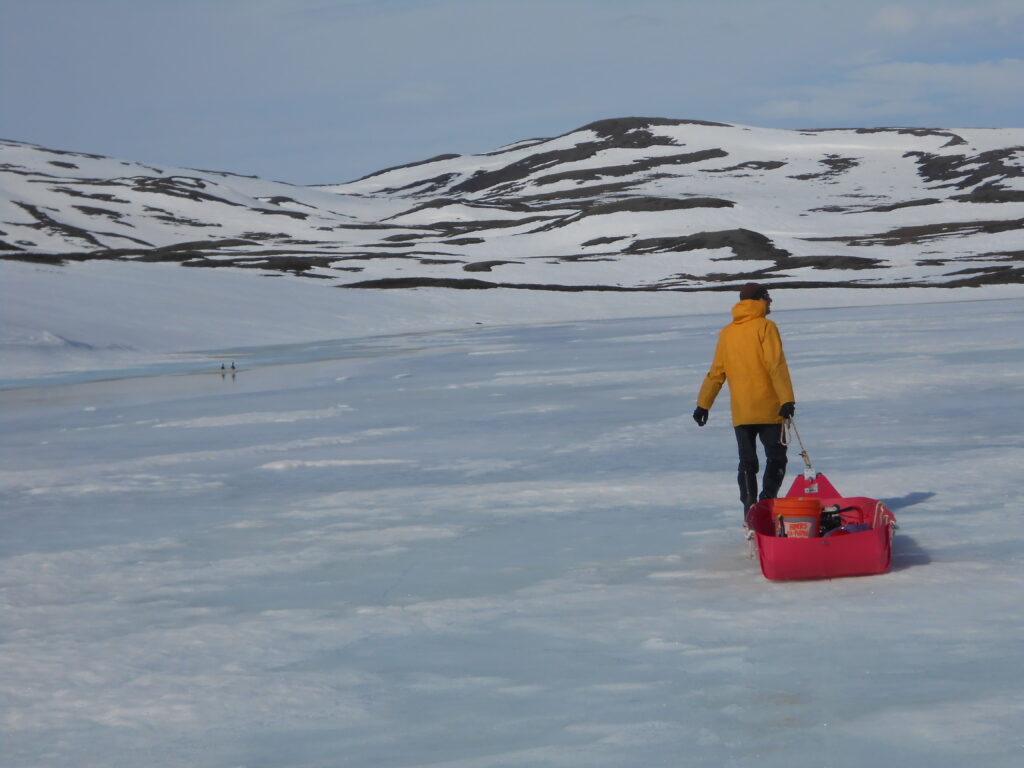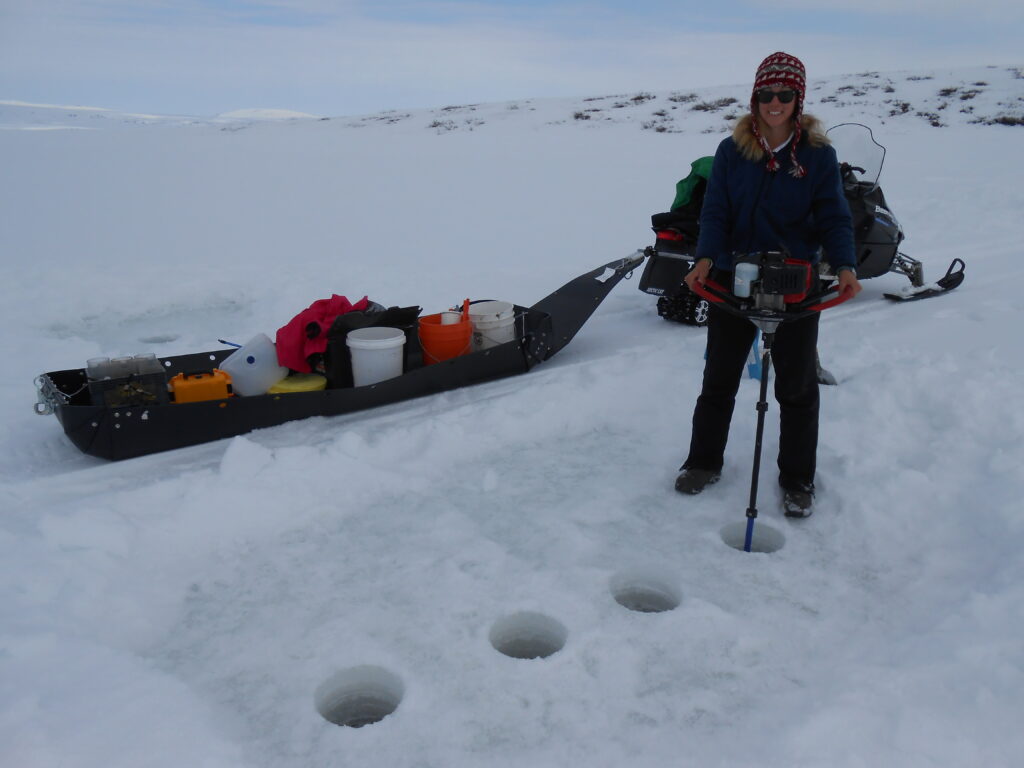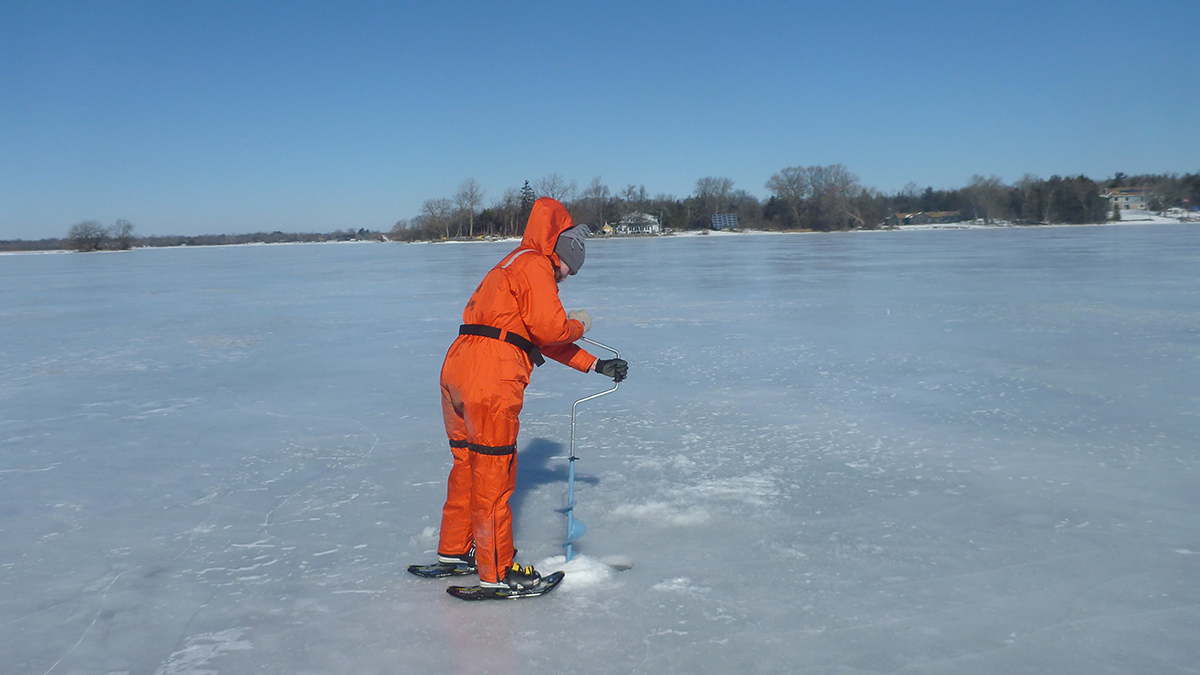Editors’ Vox is a blog from AGU’s Publications Department.
It’s hard to imagine lakes and streams located at high latitudes or elevations without ice cover during the winter but think about it we must. Aquatic ecosystems in these regions have historically spent anywhere from four to nine months beneath the cover of ice and snow. Situated in regions that are among the fastest warming on the planet, these aquatic systems are rapidly losing their ice.
Over the past few decades, scientists have documented a significant decrease in the extent and duration of ice cover. Ice cover on lakes and streams is forming later and melting earlier. In addition to phenological changes to periods of ice cover, climate change has impacted the amounts, timing, and form of winter precipitation, soil freeze and thaw cycles, and the timing of the spring. Given that ice and snow together are a “master variable” that regulates numerous physical, chemical, and biological processes within aquatic ecosystems, predicting how these systems will change in response to an altered climate requires an urgent, improved understanding of winter ecosystem function.
An AGU Chapman Conference was convened at Flathead Lake, Montana in 2019 to take stock of what is known about aquatic ecosystem function during periods of ice cover and to identify current gaps in our understanding of how these systems may change in the face of warming winters. Over fifty participants studying lakes and streams from around the world participated. A special collection of 18 papers recently published in JGR: Biogeosciences that captures the themes discussed at the conference, reviews the state of our knowledge, and provides numerous conceptual tools for predicting and testing hypotheses about ongoing change. Conceptual syntheses were supported by several papers that represented case studies from across a broad range of aquatic systems, including north temperate lakes, Laurentian Great Lakes, prairie pothole wetlands, rivers and streams, high latitude and arctic lakes, and permanently ice-covered Antarctic lakes.
The increased rate of global warming over the last decade was the impetus for revisiting how duration of ice cover is changing on lakes. Individual case studies have documented declines in duration of ice cover for some time, and remote sensing studies of ice cover on larger lakes within the last decade have illustrated the spatial extent trends. Two new analyses in the special issue update these global trends to capture important responses (Imrit and Sharma 2021; Sharma et al. 2021). The rate of loss in duration of ice cover has increased in the last decade, with the date that ice forms on lakes and the date that lakes become ice free shifting about ten days later and earlier, respectively. Moreover, variability is growing larger, with the number of extreme years where ice forms exceptionally late and melts exceptionally early increasing. Numerous studies documented changes in phenology of ice cover on both rivers (Thellman et al. 2021) and lakes at regional scales (Dugan 2021; Higgins et al. 2021; Ozersky et al. 2021; Smits et al. 2021). One study examined the extent to which the composition of organic matter within lake ice itself differed regionally, with important implications for ecosystem function (Imbeau et al. 2021). Taken together, these studies highlight how regional scale trends may be mediated by variability in local scale attributes, such as watershed slope, stream or lake size, and topographic relief (Higgins et al. 2021; Smits et al. 2021). A theme that emerged from among many studies was duration of ice cover alone misses important phenological dynamics, a concept that Sharma et al. (2020) explore in detail. By including historically understudied aquatic ecosystems, this special issue helps advance our conceptual understanding of climate responses more broadly.

Numerous papers within the special issue included literature reviews and syntheses that advance our conceptual understanding of winter dynamics. Two in particular focused on the role of lake ice as a controlling variable of several key ecosystem processes. In one, the Lake Ice Continuum Concept was introduced as a framework for understanding the role of lake ice in mediating ecosystem energetics, with implications for physical, chemical, and biological processes (Cavaliere et al. 2021). The optical clarity of lake ice and how much snow sit atop it regulate how much light and heat can enter a lake during the winter, with important implications for ecosystem metabolic rates and physical lake dynamics. Another paper emphasized the mechanisms through which physical dynamics may regulate biogeochemical and ecological processes (Jansen et al. 2021). Rates of mixing affect the distribution of organic matter, nutrients, and oxygen within the water column, and regulate numerous biogeochemical processes that influence food web structure and trophic dynamics. The role of oxygen, in particular, was emphasized in many of the case studies because it regulates so many biogeochemical reactions. Numerous studies examined variation in rates of under-ice oxygen consumption (Rabaey et al. 2021; Smits et al. 2021; Dugan 2021) and the implications of low or not oxygen on biogeochemical cycling (McAdams et al. 2021; Ozersky et al. 2021; Sawakuchi et al. 2021). The role of overwinter rates of oxygen depletion in regulating nutrient cycling was examined (Sawakuchi et al. 2021), with important implications for productivity in subsequent seasons.
Several case studies explored linkages between seasons and the extent to which winter may affect subsequent spring or summer open water periods through carry-over effects (Dugan 2021; Hazuková et al. 2021). In rivers, winter air temperatures trends were found to be the most important factor governing phytoplankton biomass (Jankowski et al. 2021). One lake study focused on under-ice phytoplankton production and biomass accumulation (Hazuková et al. 2021), which may be important determinants of spring bloom dynamics, including in lakes covered by ice year-round (Patriarche et al. 2021). Factors such as lake morphometry or trophic status may further mediate the strength of linkages between seasons by influencing the extent to which lakes mix before stratifying after becoming ice-free (Cavaliere et al. 2021; Jansen et al. 2021). While case studies examined in the special issue illustrate several important mechanisms governing winter dynamics in aquatic systems, many also highlight critical knowledge gaps concerning how the relative importance of mechanisms may vary across systems.

Predicting lake responses to climate change is a fundamental goal of limnology. This special issue highlights the accelerating loss of ice cover in many parts of the world, and the pivotal role that ice cover plays in governing a cascading series of physical, biochemical, and ecological processes (Cotner et al. 2022). For researchers and managers interested in understanding how individual aquatic systems will respond to loss of ice or the implications of changes in winter dynamics for subsequent seasons, this compendium provides a thorough account of the state of our knowledge and an excellent starting point for developing and testing hypotheses.
—Steven Sadro ([email protected], ![]() 0000-0002-6416-3840), University of California, Davis, USA; and Marguerite A. Xenopoulos ([email protected],
0000-0002-6416-3840), University of California, Davis, USA; and Marguerite A. Xenopoulos ([email protected], ![]() 0000-0003-2307-948X), Trent University, Canada
0000-0003-2307-948X), Trent University, Canada

